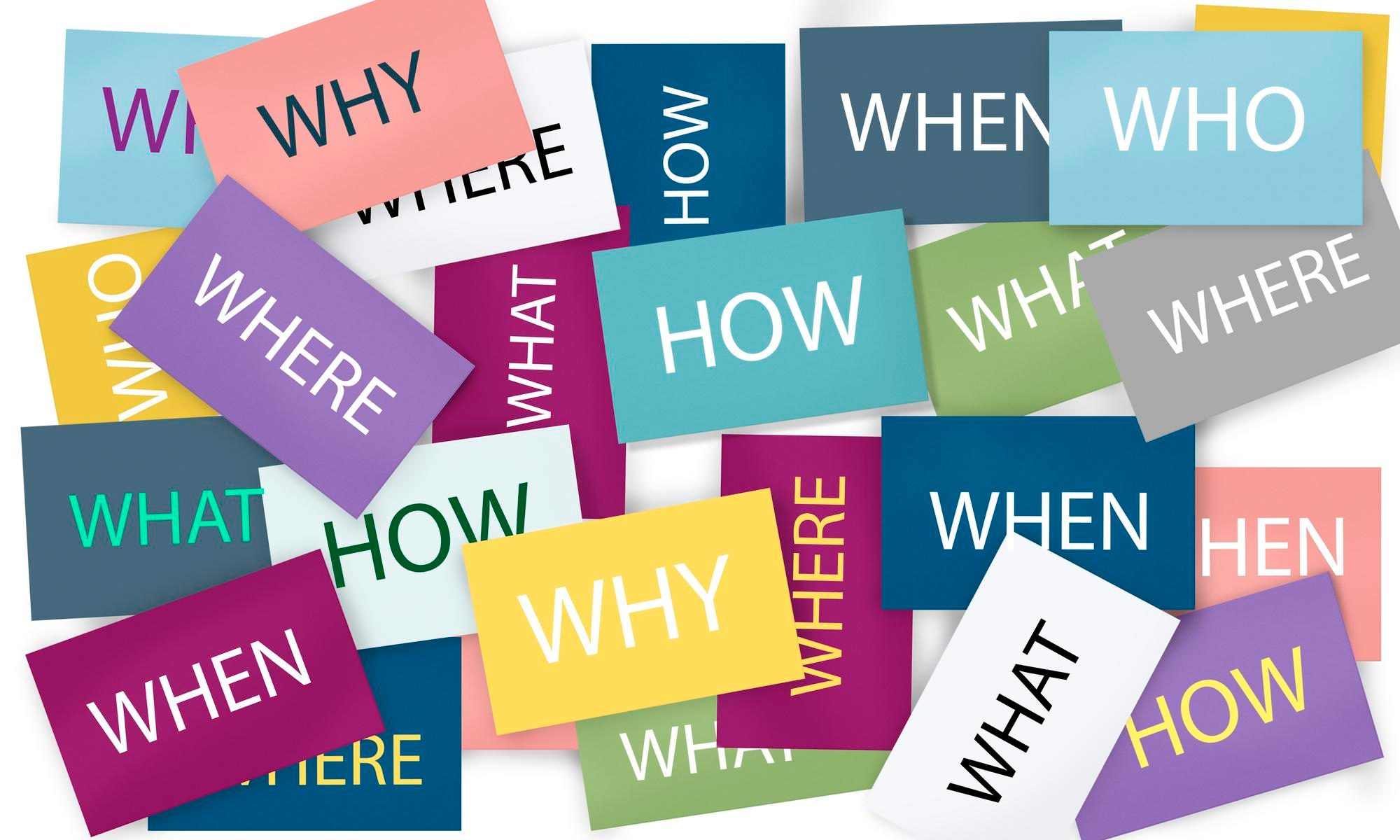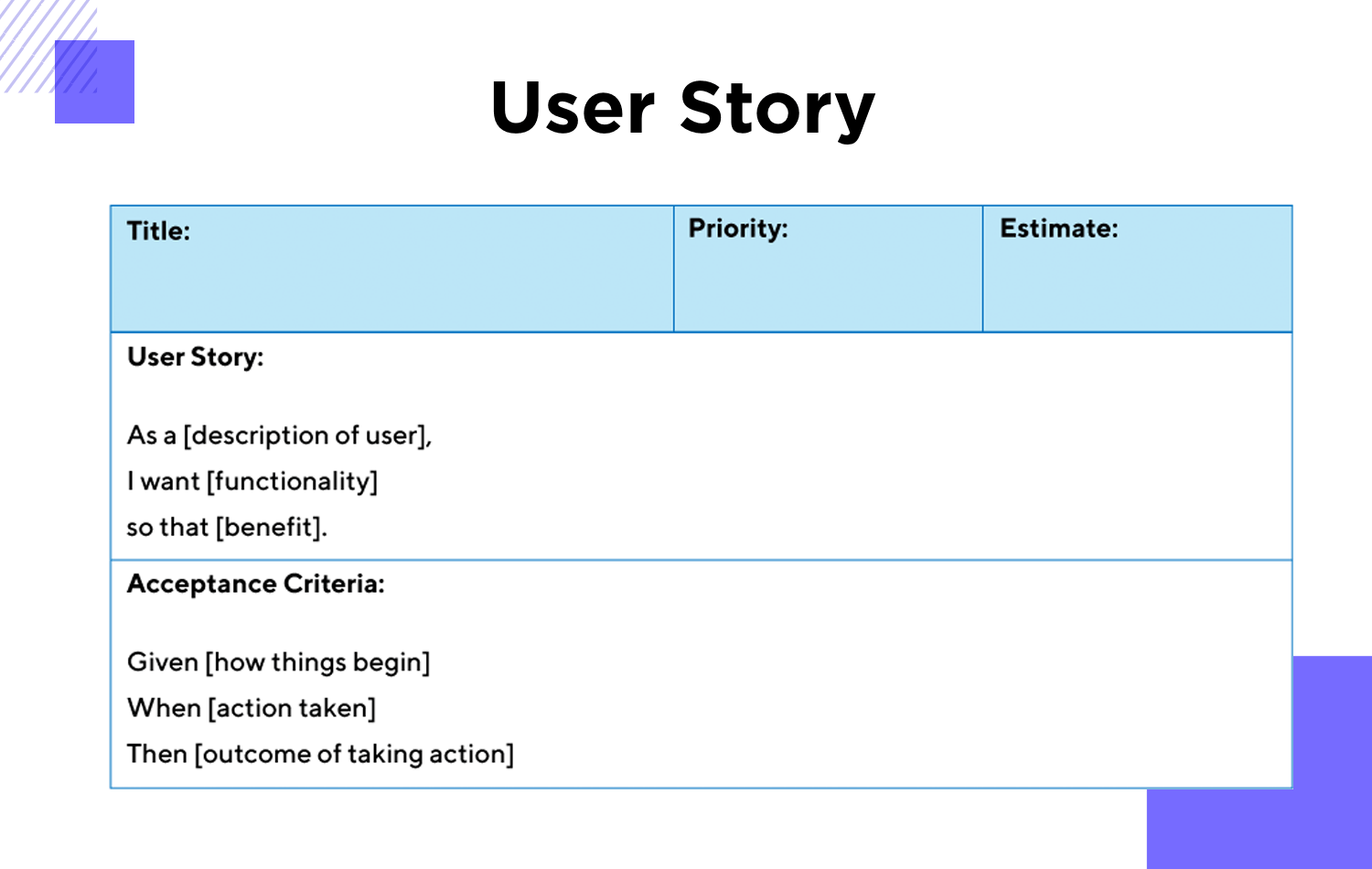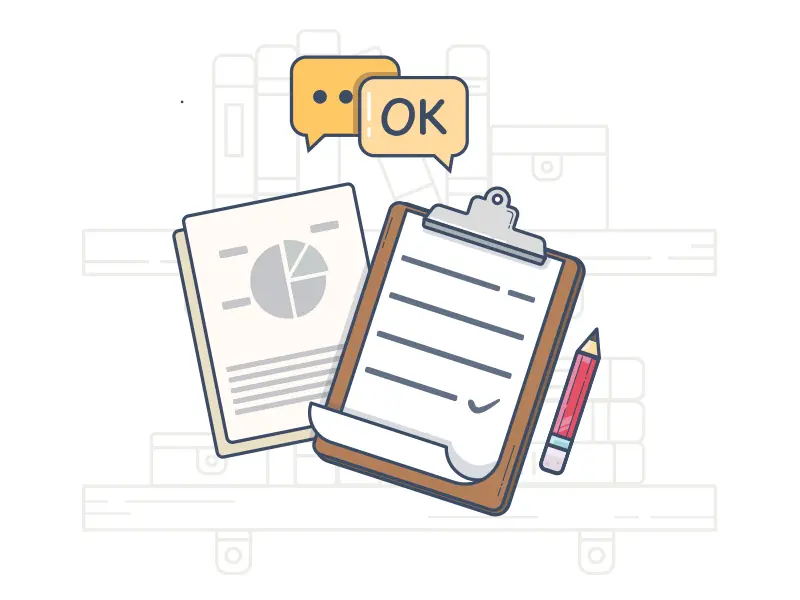Welcome aboard to a world of captivating user story writing and precise acceptance criteria, where customer-centric innovation thrives in software development.
Curious to learn the benefits of user stories and when, how, and who takes the lead in writing them? You’ve come to the right place!
Get ready to master the art of crafting compelling user stories and gain access to real-life examples and templates for agile success.
Are you eager to propel your projects to new heights? Follow our step-by-step guide to creating exceptional user stories.
Now, let’s embark on this thrilling journey together and revolutionize your software dev approach.
Let’s dive in!

User Story Writing with Agile Approach and Acceptance Criteria
User Story Writing with Agile approach is a method used in software development to capture the needs and desires of users in short, simple descriptions called “user stories.”
These stories are written from the end user perspective, focusing on what they want to achieve and why.
User stories help teams prioritize and plan their work efficiently.
Acceptance or Validation Criteria, on the other hand, are the specific conditions that a user story must meet to be considered complete. They act as guidelines to ensure that the developed feature fulfills the user’s requirements and expectations.
By having clear validation criteria, the team can verify that the user story has been successfully implemented.
Together, User Story Writing with Agile approach and Validation Criteria facilitate effective communication, collaboration, and delivering valuable software to customers.

What Are the Benefits of Creating User Stories?
Creating user stories offers several valuable benefits in the software dev with agile approach.
Here are the top five benefits:

Customer-Centric Focus
User stories keep the customer or end user at the center of the development process.
By describing features from the user perspective, teams can better understand and address user needs, ensuring that the software aligns with customer expectations.

Enhanced Communication and Collaboration
User stories serve as a communication tool between stakeholders, the Product Owner, and the development group.
They promote collaboration and foster a shared understanding of the requirements, reducing the risk of miscommunication and misunderstandings.

Flexibility and Adaptability
User stories are designed to be small, independent, and easy to change.
This flexibility allows Agile teams to respond quickly to changing priorities, customer feedback, or market conditions, ensuring that the software remains relevant and valuable.

Improved Prioritization and Planning
User stories are prioritized based on their value to the customer and the business.
This enables the team to focus on delivering the most valuable features first, ensuring that the highest-priority items are addressed early in the development process.

Incremental Delivery and Continuous Improvement
User stories support an iterative and incremental development approach. By breaking down features into smaller, manageable stories, teams can deliver working software in short iterations.
This iterative delivery enables continuous feedback, allowing for regular improvements and course corrections.
In summary, creating user stories empowers Agile teams to maintain a customer-centric approach, collaborate effectively, adapt to changing requirements, prioritize work based on value, and continuously improve the software throughout the development process.
These benefits contribute to the successful delivery of high-quality software that meets user needs and delivers business value.

When Are User Stories Written?
User stories are written throughout the Agile software development process.
They are a continuous and evolving part of the project’s life cycle.
The timing of when user stories are written can vary based on the Agile framework being used, the team’s workflow, and the project’s requirements.

Backlog Refinement (Grooming): User stories are often first written or refined during backlog refinement sessions. These sessions occur before the start of a sprint and involve the Product Owner and the development group. During backlog refinement, existing user stories are reviewed and clarified, and new user stories may be added based on changes in requirements or feedback from stakeholders.
Sprint Planning: As part of the this planning meeting, the Product Owner presents the prioritized user stories that the team will work on during the upcoming sprint. The development group may provide additional input during the planning meeting to ensure a shared understanding of the user stories and their validation criteria.
Continuous Updates: User stories may be updated or modified during the sprint as new information emerges or priorities change. Agile projects embrace adaptability, and the backlog is continuously refined based on feedback, insights, and changing market conditions.
After Sprint Review: After completing a sprint, the team may identify new user stories or changes to existing ones based on feedback from stakeholders or the product’s end users. These updates are then incorporated into the product backlog for future sprints.
Throughout the Project: Agile development encourages collaboration and iterative progress. Therefore, user stories can be written and updated at any point during the project to accommodate changing needs, emerging insights, or evolving user requirements.
In summary, user stories are written and updated throughout the Agile development process, starting from the initial stages of backlog refinement and continuing through each sprint and beyond.
This continuous refinement and evolution of user stories ensure that the development group remains focused on delivering value to the end users and aligning with their ever-changing needs.
Who writes user stories?
User stories are typically written by the Product Owner in software dev with agile approach.
The Product Owner is responsible for understanding and representing the needs and desires of the end users and stakeholders. They work closely with the development group and other stakeholders to capture user requirements and expectations.
While the Product Owner takes the lead in writing user stories, the process is collaborative.
The development group, including developers, testers, designers, and other team members, actively participates in backlog refinement meetings and user story workshops.
During these sessions, the team provides feedback, asks clarifying questions, and contributes to the refinement of user stories.
Ultimately, the user stories are a result of a collaborative effort between the Product Owner and the development group, ensuring that the entire Agile team shares a common understanding of the customer’s perspective and the project’s goals.

How to Write a Good User Story?
INVEST is a set of criteria used to evaluate and write a high-quality and good user story in software dev with agile approach.
It was introduced by Bill Wake and stands for the following:

Independent: Each user story should be independent of other stories, meaning it can be developed and delivered in any order without depending on other stories. This allows for flexibility in prioritization and implementation.
Negotiable: User stories should be open to discussion and negotiation between the Product Owner, development group, and stakeholders. They serve as a starting point for conversations rather than fixed and rigid requirements.
Valuable: User stories should deliver tangible value to the users or customers. They should address real needs or problems and contribute to achieving the project’s overall goals and objectives.
Estimable: User stories should be specific enough for the development group to estimate the effort required to implement them accurately. This aids in planning, resource allocation, and sprint commitments.
Small: User stories should be small and focused on delivering a single piece of functionality. Smaller stories are easier to implement, test, and validate, leading to faster and more frequent delivery of working software.
Testable: Each user story should have clear and well-defined validation criteria. Validation criteria outline the conditions that must be met for the story to be considered complete and enable the team to validate and verify its successful implementation.

Agile User Story Example and Templates
A User Story Template is a standardized format used to structure and document Agile user stories.
It typically follows the format: “As a [type of user], I want [an action or feature], so that [benefit or value].”
This template helps Product Owners and development teams clearly articulate user needs from the user’s perspective, facilitating effective communication and collaboration.
Here are two templates for agile user stories:

As a [type of user], I want [an action or feature], So that [benefit or value].
In order to [achieve a goal or objective], As a [type of user], I want [an action or feature], So that [benefit or value].
Examples of User Stories
Here’s one example for each of the two agile user story templates:
As a registered user, I want to be able to track my order status, So that I can know when my package will be delivered.
In order to improve customer satisfaction, As a customer support representative, I want to access the customer’s order history, So that I can provide personalized assistance and address their inquiries efficiently.
In the first example, user story is written from the perspective of a registered user who wants to track their order status. The benefit or value is that the user will know when their package will be delivered, enhancing their overall experience.
In the second example, the user story is written from the perspective of a customer support representative who wants to access the customer’s order history.
The purpose or value is to improve customer satisfaction by providing personalized assistance and addressing inquiries more efficiently, thanks to the availability of relevant order information.

The Steps to Create User Stories
To write user stories, we require a systematic approach that involves understanding user needs, collaborating with stakeholders, and maintaining clarity and focus.
Here are the steps to write good user stories:

User Research and Understanding: The first step to write user stories begins by understanding the needs and expectations of the end users. Conduct user research through interviews, surveys, or usability tests to gain insights into their goals, pain points, and preferences. This understanding forms the foundation for crafting user stories that resonate with users.
Collaborate with Stakeholders: Involve stakeholders, including customers, Product Owners, development group members, and subject matter experts, in the process of writing user stories. Collaborative sessions, such as backlog refinement meetings or workshops, help gather diverse perspectives and insights.
Identify User Personas: Create user personas, which are fictional characters representing different segments of the target audience. The personas help in empathizing with users and understanding their specific needs, facilitating the creation of more relevant and effective user stories.
Use a Standard Format: Follow a consistent and standardized format for writing user stories. A common template, such as “As a [type of user], I want [an action or feature] so that [benefit or value],” ensures clarity and makes the stories easily understandable to everyone.
Focus on Value: Prioritize user stories based on the value they deliver to the end users and the business. Identify the most critical features that align with the product’s overall vision and customer needs.
Keep Stories Independent and Small: Ensure that each user story is independent of others and focuses on delivering a single piece of functionality. Smaller, manageable user stories are easier to estimate, plan, and implement.
Define Clear Validation Criteria: Collaborate with the development group to define validation criteria for each user story. Validation criteria outline the conditions that must be met for the story to be considered complete. Clear Validation criteria help ensure that the development group understands the desired outcome.
Review and Refine: Regularly review and refine user stories based on feedback from stakeholders, the development group, and any new insights gathered during the development process. Continuous refinement improves the quality and relevance of user stories.
Testability and Measurability: Ensure that the user stories are testable, meaning that they can be validated and verified through testing. Additionally, aim to make the user stories measurable, so the success of their implementation can be objectively evaluated.
Iterative Improvement: Embrace the iterative nature of Agile development. User stories may evolve as the project progresses, and new information becomes available. Continuously adapt and improve the user stories to align with changing user needs and project goals.
By following these steps, product teams can write great Agile User Stories that effectively capture user needs, guide development efforts, and deliver valuable software products that meet customer expectations.

Conclusion
In conclusion, user story writing and acceptance criteria are vital components of successful software dev in agile approach.
Product owners play a pivotal role in capturing user needs and ensuring a common understanding within the agile team.
By crafting user stories and acceptance criteria with empathy and precision, teams can deliver business value and delight end users with innovative solutions.
As the agile methodology continues to evolve, continuous improvement and adaptation in user story writing will remain crucial to achieving project success and customer satisfaction.
With a well-crafted user story and a sticky note in hand, the possibilities are limitless in the world of agile development!

People Also Ask (FAQs)
What is the purpose of User Story Writing with Agile Approach?
The purpose of user story writing with agile approach is to capture the needs and desires of end users in short, user-centric descriptions. These user stories serve as a communication tool between stakeholders and the development group, ensuring a common understanding of project requirements and priorities. By focusing on the user’s perspective, user story writing with agile approach enables teams to deliver software that aligns with customer needs and delivers maximum value.
How do Product Owners write effective user stories?
Product Owners write effective user stories by collaborating with stakeholders and understanding user needs. They use a standard template like “As a [type of user], I want [an action or feature] so that [benefit or value]” to structure the stories. Product Owners prioritize the backlog based on user value and work with the development team to break down larger requirements into smaller, manageable user stories. Writing clear, concise, and testable user stories, with well-defined validation criteria, is essential for successful Agile projects.
How do Agile User Stories adapt to changing requirements?
Agile User Stories are designed to be flexible and adaptable to changing requirements. As customer needs evolve or new information arises, Product Owners can modify or create new user stories to reflect these changes. This flexibility is inherent in Agile methodologies, allowing development teams to respond quickly to feedback and changing market conditions. The iterative nature of Agile development encourages continuous improvement, ensuring that the product stays aligned with the most current user expectations.



